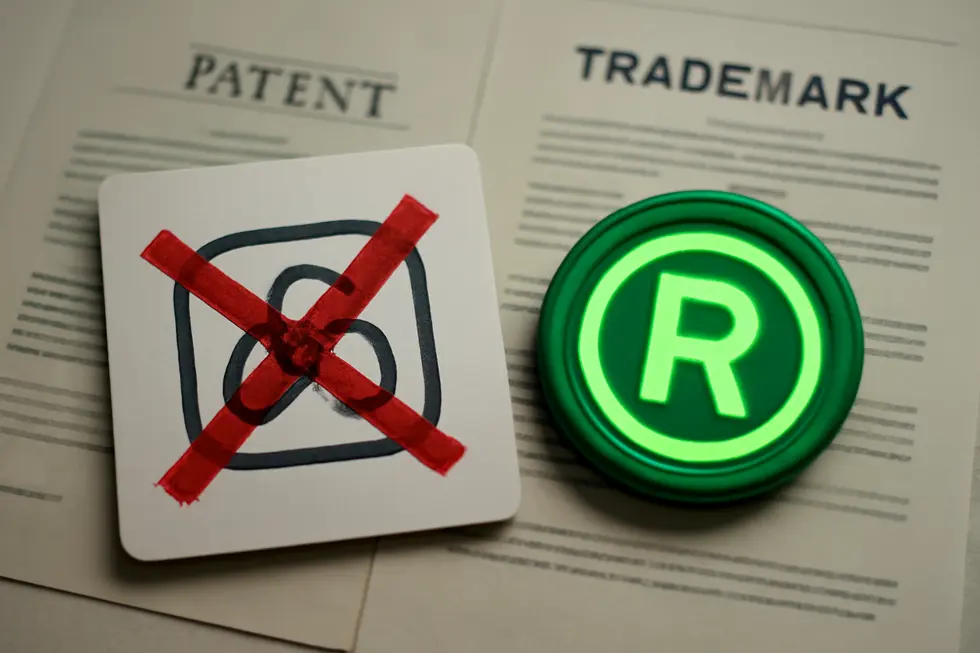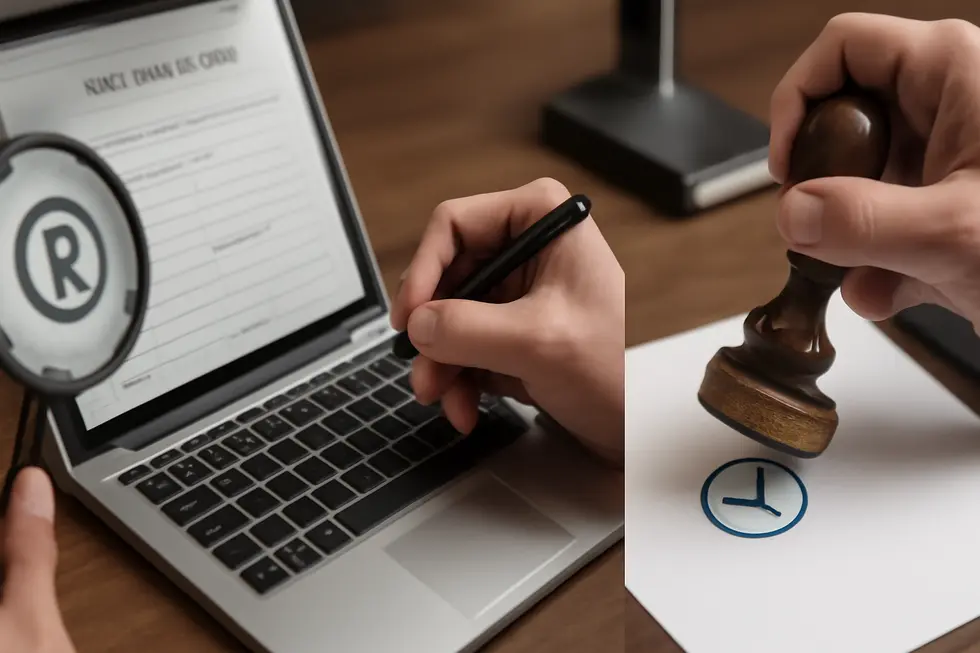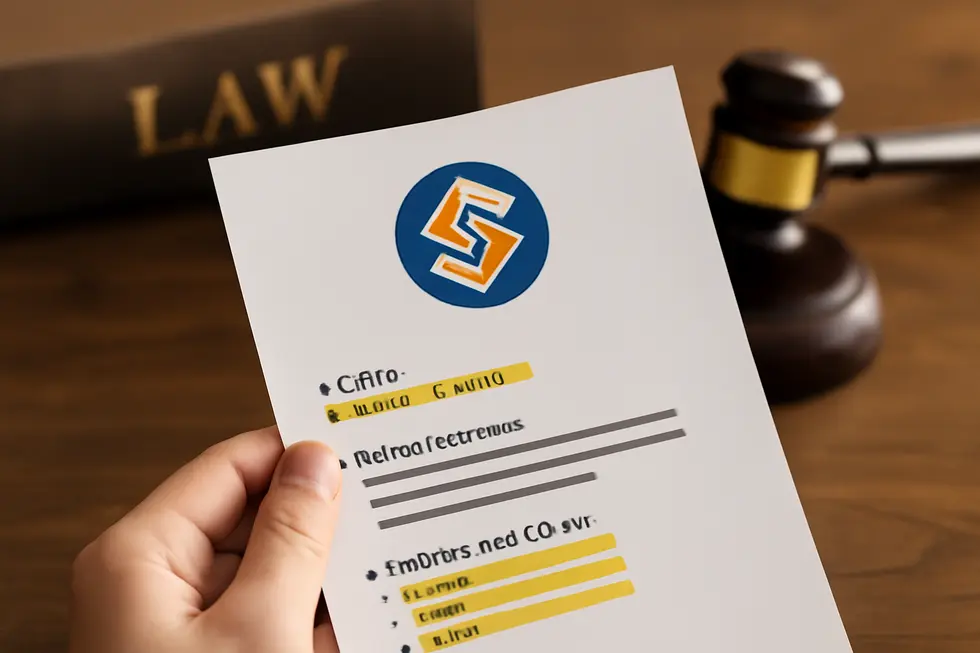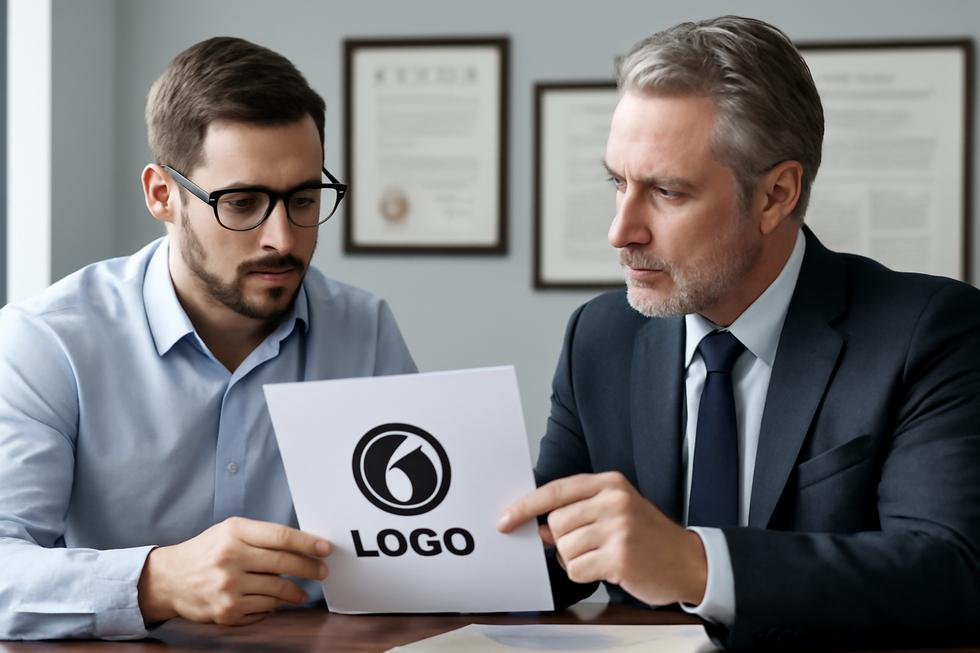Introduction
Protecting your logo is a vital step for any business aiming to secure its brand identity and market presence. While many entrepreneurs search for ways to “patent a logo,” it’s important to understand that patents typically do not cover logos, which function primarily as brand identifiers rather than inventions. This guide helps business owners navigate the true path to protecting logos—through trademark registration—clarifying common misconceptions and outlining precise steps for legal safeguarding. The first chapter explains why patents don’t apply to logos and redirects focus to trademarks. Following chapters walk through the trademark application process, key legal requirements, and the role of the USPTO. Additionally, the guide explores the rare possibility of design patents relating to ornamental designs within logos and wraps up with expert strategies to maximize protection. By understanding these critical aspects, business owners will confidently secure their logos and build lasting brand value.
Tables of Contents
Chapter 1: Understanding How to Patent a Logo: Why Patents Are Not Applicable to Logos
- Navigating Intellectual Property Laws: Why Trademarks, Not Patents, Protect Logos
- Essential Insights for Businesses: Why Trademark Protection Supersedes Patenting for Logos
Chapter 2: Step-by-Step Guide to How to Patent a Logo via Trademark Registration
- Navigating the Trademark Registration Process: Legal Essentials for Protecting Your Logo
- Navigating Trademark Registration: Practical Steps and Strategic Advice for Protecting Your Logo
Chapter 3: Key Legal Requirements in How to Patent a Logo through Trademark Processes
- Ensuring Logo Distinctiveness and Eligibility: The Cornerstone of Trademark Protection
- Navigating the Trademark Application Journey: From Filing to Maintaining Your Logo’s Protection
Chapter 4: The Role of USPTO in How to Patent a Logo: Examination and Approval Procedures
- Navigating USPTO’s Design Patent Examination: Assessing Logos for Originality and Ornamentality
- Navigating USPTO’s Examination Tools and Communications for Logo Design Patent Approval
Chapter 5: Design Patent Considerations in the Context of How to Patent a Logo
- Navigating the Eligibility and Detailed Application Process for Design Patents on Logos
- Navigating the Strategic and Legal Nuances of Design Patents for Logo Protection
Chapter 6: Legal Strategies and Expert Advice on How to Patent a Logo for Effective Brand Protection
- Trademark Registration: The Cornerstone of Legal Protection for Logos
- Harnessing Design Patents and Legal Expertise to Strengthen Logo Protection
Chapter 1: Understanding How to Patent a Logo: Why Patents Are Not Applicable to Logos

1. Navigating Intellectual Property Laws: Why Trademarks, Not Patents, Protect Logos
Patents are designed to protect inventions and functional innovations, not logos, which serve as brand identifiers. While it may seem tempting to pursue a patent for a logo, this approach does not align with intellectual property law. Logos are primarily protected under trademark law, which grants rights in distinctive signs that identify the source of goods or services and prevent consumer confusion. Trademarks can last indefinitely if properly maintained, offering ongoing brand protection.
Although copyright can protect the artistic aspects of a logo—the original graphics or design elements—it does not prevent others from creating similar logos for unrelated commercial purposes. Copyright protection arises automatically upon creation, but registration enhances enforcement capabilities. In rare situations, a logo might be part of a design patent application if it forms an ornamental design of a functional item; however, this is an exception rather than the rule since logos themselves are not functional inventions.
The core reason logos cannot be patented lies in patent law requirements: inventions must be novel, useful, and non-obvious. Logos are symbols intended for branding and do not meet these criteria. Confusingly, design patents protect ornamental aspects but apply to product designs, not logos as standalone marks. Attempting to patent a logo misunderstands these distinctions and risks application rejection.
To effectively safeguard a logo, trademark registration is the appropriate path, securing exclusive rights to use the mark commercially and legal tools to combat infringement. Complementing this with copyright registration strengthens protection over the creative expression behind the logo. Understanding these nuanced differences ensures businesses apply the right legal protections to their brand assets. For further exploration of trademark scope and logo protection, see trademark protection for business name & logo.
2. Essential Insights for Businesses: Why Trademark Protection Supersedes Patenting for Logos
Businesses often misunderstand the nature of intellectual property protection when it comes to logos. A critical insight is that logos cannot be patented because patents are reserved for inventions that are new, useful, and non-obvious technological innovations—not visual brand identifiers. Logos serve as symbols that distinguish goods or services in commerce, which places them squarely under trademark law rather than patent law.
Trademark registration offers businesses practical and lasting legal protection for their logos. Unlike patents, trademarks can be renewed indefinitely as long as the mark remains in commercial use. This continuous protection helps businesses maintain brand recognition and prevent competitors from using confusingly similar logos, which could dilute brand value and mislead consumers. Attempting to patent a logo is futile since patent offices require demonstrations of novelty and utility related to inventions, criteria logos do not meet.
Moreover, while copyright law can protect the artistic elements of a logo as original creative works, this protection does not extend to the logo’s use as a brand identifier. Copyright safeguards the design’s artistic expression but not exclusive commercial usage rights like trademarks do. Understanding these distinctions is vital for businesses to allocate their resources wisely when securing intellectual property rights.
By focusing on trademark registration, businesses effectively guard their visual identity and build consumer trust without expending time and money pursuing patent applications that will be rejected. This strategic approach ensures that logos remain protected under the law most suited to their function as branding tools. For a deeper understanding of how trademarks intersect with other forms of copyright and intellectual property protections relevant to business branding, a detailed resource is available on trademark and copyright law for business owners.
Chapter 2: Step-by-Step Guide to How to Patent a Logo via Trademark Registration

1. Navigating the Trademark Registration Process: Legal Essentials for Protecting Your Logo
Protecting a logo requires understanding that logos cannot be patented because patents cover inventions and functional designs, not brand identifiers. To secure your logo legally, you must register it as a trademark, which grants exclusive rights to use the design in connection with specific goods or services. This process begins with selecting your logo and performing a thorough trademark search to ensure no identical or confusingly similar marks exist. This step reduces the chance of application rejection and potential legal disputes.
Once the search confirms availability, the next essential phase is preparing and submitting your trademark application to the relevant office, such as the USPTO in the United States or the Registrar of Trademarks in other jurisdictions. Your application should clearly depict the logo, describe its colors and design elements, and specify the goods or services it will represent, often classified under standardized systems like the Nice Classification. Precise and complete filings help avoid delays.
After submission, a trademark examining attorney reviews the application to verify distinctiveness and compliance with legal standards. The office also searches for conflicts with existing trademarks. If no issues arise, the logo is published in an official gazette to allow third parties a period, usually three months, to oppose the registration if they believe it infringes their rights. If oppositions are absent or resolved favorably, the logo proceeds to registration.
Upon registration, you receive a certificate granting exclusive rights to use the logo within the specified categories. These rights can be maintained indefinitely by timely renewal, typically every ten years, and by demonstrating continued use in commerce where applicable. Because the trademark registration process can be complex and jurisdiction-dependent, engaging a trademark attorney can help navigate nuances, respond to office actions, and secure protection faster.
Understanding this legal and procedural framework is foundational to effectively protecting your brand identity through trademark registration rather than seeking an inapplicable patent. For further details on trademark protection relevant to logos and business branding, visit the in-depth guide on trademark protection for business names and logos.
2. Navigating Trademark Registration: Practical Steps and Strategic Advice for Protecting Your Logo
Trademark registration is the essential route to legally protect your logo since patents do not cover brand identifiers. The process starts with ensuring your logo’s uniqueness by conducting a comprehensive trademark search using tools like the USPTO’s Trademark Electronic Search System (TESS). This step helps avoid conflicts with preexisting marks, which could delay or block your registration. Carefully identifying the appropriate trademark class or classes—based on the goods or services your logo represents—is crucial for securing relevant protection under the Nice Classification system.
When preparing your application, submit a clear and detailed image of your logo alongside a precise description. Indicate whether your trademark basis is “use in commerce” or “intent to use,” the latter useful if your logo is not yet in active use but planned for future commercial deployment. Filing is completed electronically, where fees depend on how many classes your application covers, typically between $225 and $400 per class.
Once filed, your application undergoes examination to assess distinctiveness and check for conflicts. Promptly responding to any office actions or requests for clarification greatly improves the likelihood of approval. If the application clears examination, it goes to publication, offering a window for third parties to object. Successful navigation leads to registration, granting ten years of protection, renewable indefinitely with required maintenance.
Applying early helps avoid disputes and strengthens your brand’s enforcement position. Although it’s possible to navigate this alone, engaging a trademark attorney is highly advisable to address complex legal nuances effectively. Keeping thorough records of your logo’s use in commerce will support your rights if infringement arises. Remember, trademark protection is territorial, so consider international registration through the Madrid Protocol if your brand has global ambitions.
For additional insight on protecting your logo as a trademark, visit resources focused on trademark protection for business names and logos.
Chapter 3: Key Legal Requirements in How to Patent a Logo through Trademark Processes

1. Ensuring Logo Distinctiveness and Eligibility: The Cornerstone of Trademark Protection
Ensuring Logo Distinctiveness and Eligibility: The Cornerstone of Trademark Protection
When securing legal protection for a logo through trademark registration, two fundamental criteria stand paramount: distinctiveness and eligibility. Unlike patents, which protect inventions, trademarks safeguard logos by identifying the source of goods or services in the marketplace. For a logo to qualify for trademark protection, it must be distinctive—capable of distinguishing a brand uniquely without being generic or merely descriptive.
Distinctiveness usually falls into three main categories: fanciful, arbitrary, and suggestive marks. Fanciful logos consist of invented words or designs with no prior meaning, offering the strongest protection. Arbitrary logos use common words in an unrelated context, such as a familiar term applied to an unrelated product type. Suggestive logos hint at product qualities indirectly, engaging consumer imagination without descriptive clarity. These categories are inherently more eligible because they clearly separate one brand’s identity from others.
On the other hand, generic or merely descriptive logos generally fail eligibility unless they acquire secondary meaning through extensive use and consumer recognition. The trademark review process also ensures that the logo does not cause consumer confusion with existing marks and is not deceptively misdescriptive, meaning it does not mislead customers about the product’s nature or origin.
Applicants must provide a detailed description of the logo, covering elements like color, design, and text, alongside specifying the goods or services it represents, commonly categorized under the Nice Classification. Navigating these legal nuances can be complex; hence, consulting a trademark attorney is strongly advised to enhance the chances of successful registration.
Importantly, trademark distinctiveness differs significantly from design patent criteria, which require novelty, non-obviousness, and ornamental value. These distinctions underscore why trademarks, not patents, are the primary tool to protect logos as brand identifiers. For more detailed insight on trademark protection, the resource on trademark protection for business names and logos offers valuable guidance.
2. Navigating the Trademark Application Journey: From Filing to Maintaining Your Logo’s Protection
Registering a logo as a trademark involves a comprehensive process that ensures your brand’s unique identity gains legal protection. The journey begins with conducting a thorough clearance search. This critical step helps confirm that your logo is distinct and not already registered, reducing risks of infringement and potential rejection during examination. Once confident in your logo’s uniqueness, the trademark application must be precisely prepared. This includes detailing the design elements, colors, and any accompanying text, and carefully selecting the appropriate classes that represent your goods or services, typically by using the Nice Classification system.
Filing the application with the USPTO is done electronically, accompanied by payment of the required fees. This signals the beginning of the formal examination phase, where the USPTO scrutinizes your application to verify the logo’s distinctiveness and absence of conflicts with existing trademarks. Should any issues arise, the USPTO issues office actions outlining objections or requests for additional information, which the applicant must address promptly to avoid delays or denial. This examination period commonly spans six to twelve months.
Following successful examination, registration grants your logo exclusive rights in commerce. However, protection doesn’t end there; trademark maintenance is vital to uphold these rights over time. Owners must file renewal documents and remit fees, beginning between the fifth and sixth year after registration, then every ten years thereafter. Additionally, consistent monitoring for unauthorized use is essential to enforce your trademark and deter infringement. Failure to comply with maintenance requirements may lead to losing valuable protections, underscoring that vigilance is integral to sustaining your brand’s identity.
For a clearer understanding of trademark enforcement and how it safeguards your logo, explore the comprehensive details on trademark protection for business names and logos.
Chapter 4: The Role of USPTO in How to Patent a Logo: Examination and Approval Procedures

1. Navigating USPTO’s Design Patent Examination: Assessing Logos for Originality and Ornamentality
When applying to patent a logo through a design patent, the United States Patent and Trademark Office (USPTO) undertakes a rigorous examination process to evaluate the application’s merit. This examination focuses on whether the logo’s design qualifies as a novel and non-obvious ornamental feature applied to an article of manufacture. Unlike utility patents that protect functional inventions, design patents safeguard the visual appearance—the ornamental design—of an item, which can include logos if they serve as decorative features on products.
The USPTO’s patent examiner carefully reviews the application, with particular emphasis on the submitted drawings that portray the logo. These drawings are crucial as the design patent claim protects the exact ornamental depiction demonstrated in them. The examiner compares the design against prior art—existing designs and patents—to ensure the logo is unique and not simply an obvious variation from earlier designs. This scrutiny determines whether the logo meets the legal standards of novelty and non-obviousness.
During examination, the USPTO may issue Office Actions if concerns arise, such as similarities to existing designs or clarity issues. Applicants must respond by addressing objections, amending drawings, or providing arguments defending originality. This interactive process continues until the examiner decides to allow or reject the application based on established patentability requirements.
It’s important to note that the USPTO’s design patent review contrasts with trademark registration, which protects logos as brand identifiers to prevent marketplace confusion. Design patents focus on protecting the ornamental design itself rather than the logo’s commercial use or identity function.
Understanding these distinctions and the detailed USPTO examination steps for design patents is vital for businesses considering intellectual property protection for logos. For more insight into trademark protection options for logos, including how to safeguard brand identity effectively, see this resource on trademark protection for business logos.
2. Navigating USPTO’s Examination Tools and Communications for Logo Design Patent Approval
When pursuing a design patent for a logo, the United States Patent and Trademark Office (USPTO) serves as the gatekeeper overseeing examination and approval. The USPTO’s role extends beyond mere application intake; it provides a comprehensive suite of electronic tools and communication protocols that applicants must master to successfully navigate the approval process.
Applications are filed electronically using platforms such as the EFS-Web system or the more recent Patent Center. These systems streamline submission and status tracking, allowing applicants to manage their filings efficiently, upload required documents, and respond to office communications promptly. The Patent Center even offers a Training Mode, providing a risk-free environment to familiarize users with filing procedures before submitting actual applications.
Upon filing, a USPTO patent examiner conducts an exhaustive review to ensure the logo design meets patentability criteria including novelty, non-obviousness, and ornamental uniqueness. This involves comparing the logo against prior designs and verifying compliance with statutory requirements. The examiner communicates findings through official Office Actions, which may include rejections, requests for clarification, or suggestions for amendment.
Effective communication is crucial. Applicants must respond thoroughly and within designated timeframes, addressing examiner concerns to avoid delays or abandonment. Many applicants and their attorneys utilize intellectual property management software to track deadlines and maintain organized records, which supports timely and accurate responses.
Additionally, secure communication channels and digital conferencing tools have enhanced dialogue between applicants, attorneys, and the USPTO, fostering clearer understanding of examiner feedback and requirements.
Mastering this interaction with the USPTO’s tools and communication protocols is vital. It not only facilitates compliance with procedural demands but also significantly increases the likelihood of obtaining patent approval for a logo’s design. For broader intellectual property strategies involving brand protection, consulting detailed insights on trademark registration processes can provide valuable complementary guidance.
Chapter 5: Design Patent Considerations in the Context of How to Patent a Logo

1. Navigating the Eligibility and Detailed Application Process for Design Patents on Logos
Patenting a logo through a design patent involves meeting specific and stringent criteria that differentiate it from typical patent protection for inventions. To qualify, the logo must exhibit novelty, originality, and ornamentality. This means the design must be new, not publicly known or previously used, and serve a purely decorative purpose rather than a functional one. The logo should also be non-obvious, ensuring it is not a mere predictable variation of existing designs familiar to those skilled in the field.
The application process starts with a thorough prior art search. This step is crucial to confirm that no similar ornamental designs have been patented or disclosed before. Next, preparing precise and detailed drawings or images of the logo is essential. These visuals need to capture the logo from multiple angles and with clarity, as the USPTO relies heavily on such illustrations to evaluate the uniqueness and ornamental nature of the design.
Filing the design patent application with the USPTO requires submitting a specification describing the logo, accompanied by the detailed drawings or photographs. An oath or declaration must be included, along with the necessary filing fees. During the examination phase, the applicant may need to communicate with the patent examiner to address objections or rejections. This dialogue helps demonstrate that the logo’s design meets the novelty and non-obviousness standards set forth by patent law.
Once approved, the design patent grants protection for the ornamental aspects of the logo for 15 years from the date of grant. However, it is important to note that this protection does not extend to the logo’s functional features or its role as a brand identifier. For comprehensive brand protection, securing a trademark registration alongside, or instead of, a design patent remains the standard approach. For deeper insights on trademark protection relating to logos, visit trademark protection for business names and logos.
2. Navigating the Strategic and Legal Nuances of Design Patents for Logo Protection
When considering the possibility of patenting a logo, understanding the strategic and legal nuances of design patents is crucial. Design patents protect the ornamental appearance of a logo as it applies to a specific product, offering exclusive rights for up to 15 years. This exclusivity can provide a powerful competitive advantage by preventing others from copying the unique visual design on the same type of article. However, it is important to note that design patents shield only the aesthetic form, not the logo’s function as a brand identifier.
The scope of protection under design patent law is tightly linked to the drawings included in the application and the product to which the logo is affixed. This means if a logo is patented as part of one product, using the same design on a different class of product might not infringe that patent. This specificity contrasts with trademarks, which protect logos as source identifiers across various goods or services, preventing consumer confusion in commerce.
From a strategic perspective, design patents are less costly and faster to obtain than utility patents, making them an attractive option to secure ornamental aspects of a logo. Publicizing the patented status can enhance brand image and serve as a deterrent to copycats. Still, the value of design patents lies in complementing the broader protection offered by trademarks, which establish legal rights to use the logo as a brand mark and enable stronger enforcement in the marketplace.
Navigating the complexities of design patent prosecution requires detailed drawings emphasizing the ornamental features and a clear understanding that these patents do not replace trademark registration. Businesses should consider combining both protections to safeguard a logo’s visual uniqueness and brand identity effectively. For insights on protecting logos as trademarks, see authoritative resources on trademark protection business name logo.
Chapter 6: Legal Strategies and Expert Advice on How to Patent a Logo for Effective Brand Protection

1. Trademark Registration: The Cornerstone of Legal Protection for Logos
Protecting a logo effectively requires understanding that trademarks, not patents, serve as the primary legal safeguard for brand identity. Trademark registration grants the owner exclusive rights to use the logo in commerce, preventing others from adopting confusingly similar marks for related goods or services. By formally registering a logo with the United States Patent and Trademark Office (USPTO), a business establishes public proof of ownership, which is critical when enforcing rights or deterring infringement. Registered trademarks confer the right to use the ® symbol, signaling to competitors that the mark is legally protected and increasing the mark’s commercial value.
The registration process begins with a thorough clearance search to ensure the logo’s uniqueness and avoid conflicts with prior marks. After filing the application, the USPTO examines it for distinctiveness and compliance. This review may trigger office actions requiring clarifications or adjustments before the mark is published for opposition, allowing third parties to contest its registration. Once cleared, the trademark enjoys federal protection, enabling the owner to initiate lawsuits against unauthorized users in federal courts.
Beyond foundational protection, the trademark owner must remain vigilant. Active monitoring of the marketplace and new trademark filings is essential to identify and challenge potential infringements promptly, preserving the logo’s distinctiveness and legal strength. Broad registration covering current and anticipated future goods or services ensures comprehensive protection that aligns with business growth.
Although patents mainly protect inventions, design patents can occasionally protect a logo’s unique ornamental elements. When used alongside trademarks, design patents offer an additional defensive layer by safeguarding the logo’s visual innovation. Strategically, businesses often place trademarks within holding companies to shield valuable intellectual property assets and facilitate expansion.
Engaging an intellectual property attorney is highly advisable to navigate the complexities of registration, maintenance, enforcement, and international protections such as those afforded by the Madrid Protocol. This comprehensive approach ensures logos remain powerful assets underpinning brand identity and market presence.
For further insights on securing a logo as a trademark and understanding protection nuances, see this detailed resource on trademark protection for business names and logos.
2. Harnessing Design Patents and Legal Expertise to Strengthen Logo Protection
Although patents typically cover inventions and functional designs, a design patent can protect the unique ornamental elements of a logo. This form of protection grants exclusive rights to the logo’s visual appearance for up to 15 years in the United States, preventing others from manufacturing or selling a confusingly similar design. While uncommon, securing a design patent for a logo can serve as a strategic asset, reinforcing your brand’s innovative image and deterring infringement through claims such as “Patented Design.”
However, it is crucial to distinguish design patents from trademark protections. Logos primarily function as brand identifiers and are best protected by federal trademark registration, which grants exclusive rights to use the logo in commerce. Trademark protection involves careful preliminary searches to confirm uniqueness, precise descriptions of the logo and related goods or services, and submitting an application to the appropriate authorities. This process establishes legal grounds to prevent unauthorized use and build brand recognition.
Leveraging expert legal advice is essential throughout both processes. Patent attorneys ensure that design patent applications are meticulously drafted, clearly defining what is protected to withstand examination for novelty and non-obviousness. Trademark attorneys assist with comprehensive searches, accurate filings, and ongoing enforcement actions, such as sending cease-and-desist notices and pursuing litigation if needed.
Beyond patents and trademarks, registering your logo’s artwork for copyright further strengthens protection by asserting ownership of the original visual expression. Technical safeguards such as website image protections can also deter unauthorized reproduction online.
This integrated approach—combining design patents, trademark registration, copyright protection, and expert legal counsel—maximizes your logo’s legal safeguards and transforms it into a valuable, defensible brand asset. For more on protecting logos, reviewing strategies for trademark protection of business name and logo provides practical insights.
Final thoughts
Ultimately, patenting a logo is a common misconception among business owners seeking to safeguard their brand identities. Logos are not functional inventions, which puts them outside the scope of utility patents. Instead, trademark registration offers the most effective and legally secure path to protecting your logo. By understanding why patents do not apply, following a thorough trademark application process, navigating USPTO examination, and considering design patent nuances, you can ensure your logo stands guarded against infringement. Partnering with legal professionals and adopting expert strategies further increases your chances of success. Securing your logo as a trademark not only fortifies your brand’s market presence but also strengthens your legal authority, laying a solid foundation for long-term business growth and consumer trust.
Your IP is the foundation of your success – let’s protect it together before it’s too late. We can’t wait to help you turn your ideas into legally secured assets.
About us
undefined


